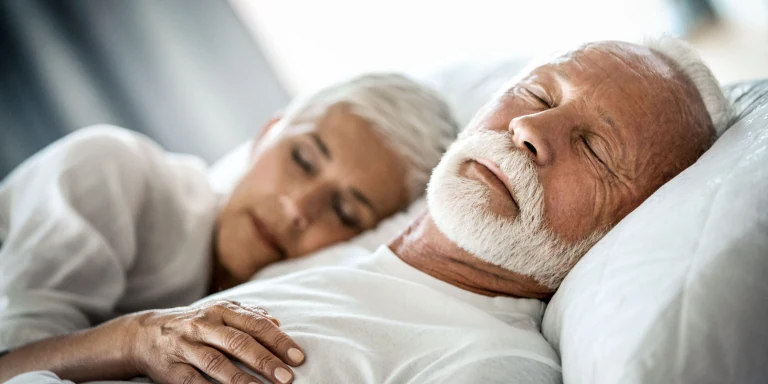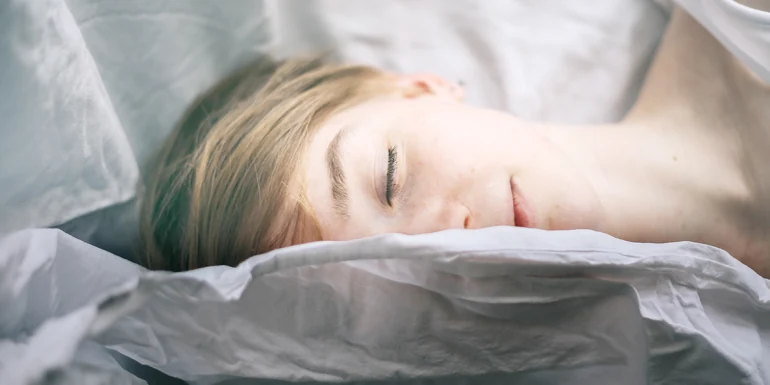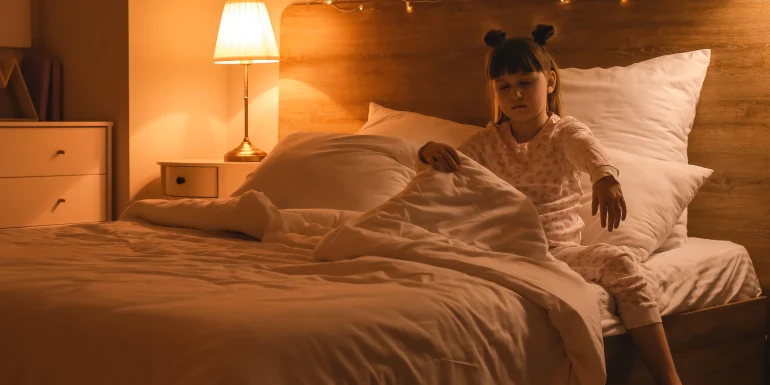
What happens during the different sleep phases
During our sleep, we only appear to be inactive. In fact, complex neurophysiological processes take place according to precisely defined phases after we fall to sleep, ensuring we are fit to tackle the next day.
When we fall to sleep in the evening, our body goes on a journey. As we fall to sleep, our body passes into a lighter and then an intermediate sleep phase. From here, it descends into the deep sleep phase. During this phase, our pulse and blood pressure fall. Our breathing and brain activity also decline while we sleep. The REM (rapid eye movement) sleep phase begins after this. It is characterised by small, quick brain waves and rapid eye movements During this phase, our brain also consolidates what it has learnt during the day.
Deep sleep phase
The deep sleep phase is essential for us as we are able to regenerate here. It is the phase during our sleep when we recover best. During the deep sleep phase, our body distributes an especially large amount of growth hormones. Our cells also regenerate. This is not only essential, for example, for the growth of our nails and hair, but also for the healing of wounds. Our immune system is also strengthened during this sleep phase. We hardly dream when we are in a deep sleep. And if we do, we are usually unable to remember it when we wake up.
How active we are during the REM phase
The REM phase begins after deep sleep. Our eyes begin to move quickly to and fro. It is for this reason that researchers named REM sleep after the term rapid eye movement (REM). During the REM phase, our body once again steps up a few gears. In REM sleep, our brain activity, breathing, pulse and blood pressure almost increase to the levels they reach when we are awake. While we sleep, our body therefore consumes almost as many calories as it does during the day when we are at rest. Only our muscles remain fully relaxed during REM sleep.
This is likely so that we do not act out the wild dreams that our brain plays out in our minds during REM sleep. The REM phase is considered to be the dream phase. If you wake up during REM sleep, you can usually vividly remember your dreams. This is because the brain is networked differently during REM sleep than it is during deep sleep, finding itself in a state similar to that we experience during waking hours. Incidentally, REM sleep is also referred to as “paradoxical sleep” or “dream sleep”.
The REM phase alternates with the NREM phase, which includes the light and deep sleep stages mentioned above. NREM stands for non-rapid eye movement.
Between the sleep phases, there are moments in which we are almost awake. Waking up at these moments is more pleasant for us than during deep sleep phases.
Sleep phase alarm clocks address precisely this issue: via sensors in an armband, the alarm clocks sense our almost-awake moments. The sensors recognise this through our movements which increase at these moments. The sleep phase alarm clocks then wake us by ringing or vibrating during a time period specified by us. If the sleep phase alarm clock does not identify any moments in which we are almost awake, it wakes us automatically at the end of the set time window to be safe. Generally, sleep phase alarm clocks are reliable at waking us up but for some people it may also be the case that they do not always recognise the moments of superficial sleep.
Sleep tracker alarm clocks
Alternatively, there are sleep tracker alarm clocks. These also allow us to learn something about our sleep phases, sleeping behaviour and sleep duration. This can help us in optimising our sleep. Sleep trackers are available with an alarm function in fitness armbands or as contactless sleep monitoring systems for your mattress.
The most important producers
The leading producers of a wide variety of sleep phase alarm clocks or sleep tracker alarm clocks include aXbo, Philips, Sony and Fitbit. Sleep tracker alarm clocks are not only available from aXbo and co., but also in the form of smartphone apps. The most well-known of these is called Sleep Cycle. Due to the associated radiation, however, not everyone is prepared to place their smartphone next to their pillow throughout the night.
Which model to choose?
The most suitable model to choose from the many sleep phase alarm clocks differs from person to person. Among other things, the choice depends on your technological preferences.
Several sleep cycles per night
While we sleep, the processes in our bodies are influenced by hormones and our brain’s control system. Depending on the sleep phase, we feel more or less tired. The light, intermediate, deep and REM phases together form a complete sleep cycle. Its duration can vary. On average, however, it lasts 90 minutes. In the case of adults, a sleep cycle is repeated around five times a night. During this time, the phases can be of different depths. We do not know why we pass through the individual sleep phases several times a night. Scientists are yet to find an explanation for this.

Daniela Janssen (lic. Phil. somnologist and psychotherapist FSP) is a member of the Specialist Somnology Team at the Zentrum für Schlafmedizin Hirslanden Zürich (centre of somnology). She advises adults, young people and children with sleeping disorders. As a psychotherapist, she also works in her own practice. Daniela Janssen was available to the editorial team in an advisory and editorial capacity for this article.



Newsletter
Find out more about current health issues every month and get all the information you need about our attractive offers from all Helsana Group companies * delivered by e-mail to read whenever it suits you. Our newsletter is free of charge and you can sign up here:
We did not receive your information. Please try again later.
* The Helsana Group comprises Helsana Insurance Company Ltd, Helsana Supplementary Insurances Ltd and Helsana Accidents Ltd.